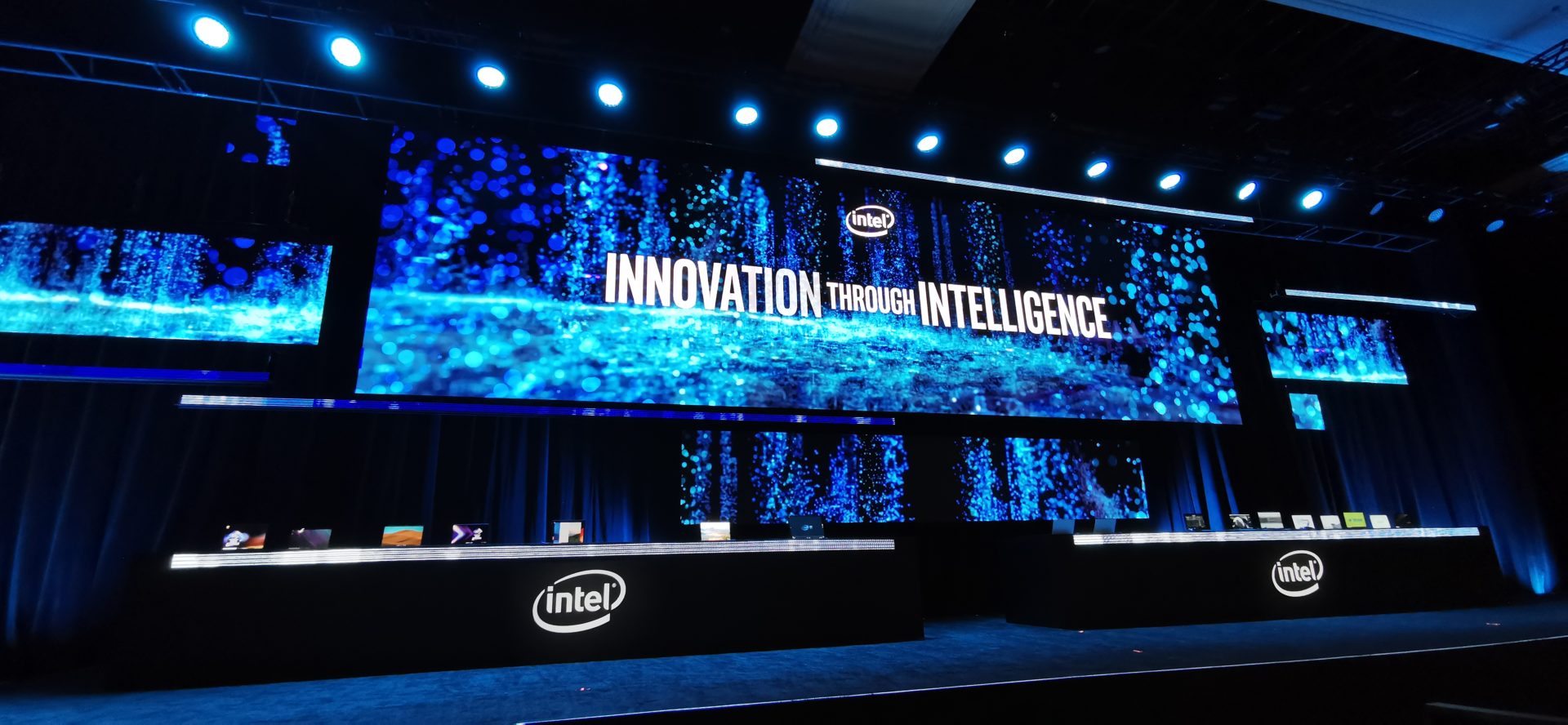Advances in Artificial Intelligence that prepare the way for autonomous driving; a new era of innovation in mobile computing; the future of sports and immersive entertainment. Today, Intel checked all this and more at the CES 2020 technology fair, demonstrating how the company is driving intelligence across the cloud, the network, the edge and the PC, and how it is driving a positive impact on people, businesses and society.
Intel CEO Bob Swan inaugurated this press conference by sharing several updates of his business, Mobileye, including a demonstration of his autonomous car “RoboCar”, navigating the traffic in a natural way. The unit demonstrated the unique and innovative approach of Mobileye to offer safer mobility for all, with a combination of Artificial Intelligence, computer vision, the regulatory scientific model of RSS and “true redundancy” through independent detection systems.
Swan also highlighted Intel’s work with the American Red Cross and its project Missing Maps (Missing Maps), to improve disaster preparedness. Through the use of Artificial Intelligence acceleration integrated in Intel® Xeon® Scalable 2 processorsto Generation, Intel is contributing to the American Red Cross and its project, in the construction of very accurate maps with bridges and roads to distant regions of the world, which helps emergency services in case of disasters.
Intelligence-driven mobile computing
Mobile computing was a field that was emphasized, since Intel made announcements that covered exciting new products, partnerships and innovations at the platform level, which will transform the way people focus, create and get involved. Intel Executive Vice President Gregory Bryant announced the following:
- First time presentation and demonstration of the new Intel® Core ™ mobile processors with code name “Tiger Lake” Tiger Lake is designed to realize Intel’s bold vision of people-driven mobile computing, with innovative advances in every vector and experience that matters.
- With optimizations covering the CPU, Artificial Intelligence accelerators, and discrete level integrated graphics, based on the new architecture of Intel X graphicsand a huge leap in graphics performance and four times the capacity of USB3 with the new Thunderbolt 4 integrated. Based on 10nm + process From Intel, the first Tiger Lake systems are expected to ship later this year.
the new Intel X graphics architectureand, will bring huge performance gains to Tiger Lake processors
- Advancement of the first discrete GPU based on the X architectureand: Intel Vice President of Architecture for Graphics and Software, Lisa Pearce, gave an explanation of the progress of the new Intel X graphics architectureand, which will bring enormous performance gains to Tiger Lake processors, and made progress on the first discrete GPU based on the X architectureand Intel, codenamed “DG1.”
- Important updates to Intel’s “Project Athena” innovation program, including the first Chromebooks verified by the program: The designs verified by the Project Athena They were modified, tested and verified to provide fantastic system-level innovation and benefits, covering battery life, constant responsiveness, instant activation, application compatibility and more. Intel has verified 25 designs of the Project Athena, to date, and Bryant announced the expansion of its alliance with Google, which has already resulted in the first two Chromebooks verified by the Project Athena: the ASUS Chromebook Flip (C436) and the Samsung Galaxy Chromebook. Intel expects to verify approximately 50 more designs with Windows and Chrome this year, and offer a reference specification for dual-screen PCs.
- Format information, including double screens and a revolutionary folding design: Through great co-engineering efforts with original equipment manufacturing partners (OEMs), Intel is contributing to providing devices that define categories, based on Intel Core processors. The above includes new folding and dual-screen designs such as the Lenovo ThinkPad X1 Fold, which takes advantage of the Intel Core processor with Intel hybrid technology (codenamed Lakefield), which are planned to ship mid-year, and the Dell Concept Duet. Bryant also gave a preview of Intel’s latest conceptual device: a foldable OLED screen format with code name “Horseshoe Bend.” Based on the next Intel Tiger Lake mobile processors, the design is similar in size to a 12-inch laptop with a foldable touch screen that can be opened to become one of more than 17 inches.
Business transformation driven by intelligence
The data center is the force that intelligence brings to companies around the world and processors Intel Xeon Scalable They continue to be the foundation of the data center. Executive Vice President Navin Shenoy announced that the processors Intel Xeon Scalable of 3to Generation, which are planned for the first half of 2020, will include extensions of Intel® DL Boost for the acceleration of the performance of the training of Artificial Intelligence integrated, which will produce an increase of up to 60% in the performance of the training in counted with the family of previous processors.

Shenoy highlighted several ways in which Intel is incorporating intelligence into data platforms across the cloud, the network and the edge, as well as the way in which the above is transforming sports and entertainment:
- Netflix optimizes and accelerates media streaming services: Netflix has used the latest video compression technology, AV1, to improve its media streaming services and bring content to life worldwide, with up to 60% compression efficiency over previous compression technology (AVC for its acronym in English).

- The joint efforts of Intel and Netflix continue with the development of an open source high performance encoder (SVT-AV1) optimized in processors Intel Xeon Scalable 2nd Generation that offers significant gains in quality and performance that make it possible for commercial implementation.
- Improved experiences of athletes and spectators in Tokyo 2020 with 3D Athlete Tracking: The first computer vision solution in its class, 3D Athlete Tracking (3DAT) (3D tracking of athletes), uses Artificial Intelligence to enhance the visual experience with information and visualizations in almost real time. 3D Athlete Trackinguse highly mobile cameras to capture the shape and movement of athletes, then apply optimized algorithms with Intel DL Boost which are fed by processors Intel Xeon Scalable, to finally analyze the biomechanics of the movements of the athletes. Shenoy announced that this technology will improve 100-meter retransmissions and other speed races at the Tokyo 2020 Olympics.
- Large-scale volumetric video transmission: Intel and the sports industry are transforming the experience of watching sports with volumetric video, an important advance that allows viewing sports without limitations. Intel® True View ™ synthesizes the entire volume of the stadium field to provide unlimited angles that allow fans to choose any point of advantage and perspective of the players and transmit from their devices. Intel and the NFL exhibited the power to stream cloud-based volumetric video with a play of the week 15 game, Cleveland Browns vs. Arizona Cardinals. Data produced in the first quarter of just one NFL game reaches more than 3 TB per minute – an exponential increase that requires tremendous computing power, both locally and in the cloud.















